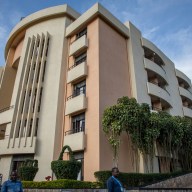The Canadian Women’s National Team, previously ranked sixth in the world by FIFA, has officially finished dead last at the Women’s World Cup.
With that kind of failure comes questions. And they’ve been coming at a dizzying pace the last week. Who is to blame? How did this happen? Was it Carolina Morace’s fault? The players? Or is the CSA bogeyman once again to blame? Of course, there is never one answer and, in all truth, the problem lays much deeper than any simple blame will tell – but that doesn’t stop the questions from coming.
It’s never easy for anyone to face that kind of scrutiny, especially when the expectations were placed so high. So, today, it’s not surprising to see the player’s deflecting the blame in this Radio Canada story.
As they tell it, they needed more preparation, they needed more support and they just plainly needed to be better.
“Maybe we needed to play a few more matches in order to have the physical ability to last 90 minutes,” suggested Marie-Eve Nault to Radio Canada.
Maybe they did need more. But, according to these FIFA statistics, between Jan. 1, 2009 and June 25, 2011, Canada had equal, if not more opportunity for preparation than any of the top contenders.
USA WNT: 37
GER WNT: 29
BRA WNT: 18
JPN WNT: 29
SWE WNT: 41
FRA WNT: 35
CAN WNT: 38
Only Sweden played more matches. When was the last time Canada played more than the USA, let alone six of the top seven teams? So, it can’t be that. Melissa Tancredi pointed the finger at the age-old scapegoat – the CSA – while nobly defending her coaches.
“We need better support from our federation. “Our coaches are not to blame,” insisted Tancredi
Maybe they did need more. But, in all my years of following national team football, I don’t recall a single period where any national team – men’s or women’s – was given more time abroad by our federation to get ready as a group. Since Jan. 1 2011, together as a team, the national women’s squad spent 114 days training overseas. That’s out of a possible 168.
January 13-26 in China
February 12-22 in Italy
February 23-March 10 in Cyprus
March 23-April 20 in Italy
May 1st until June 17 in Italy until when they traveled to Germany
I don’t have the exact figures spent, but I suspect sending an entire team overseas for that amount of time is a fair chunk of change and a major commitment from a federation. So, it’s not that either.
Rhian Wilkinson’s assessment seems like an honest undertaking of responsibility.
“We showed that we have a lot of work to do in order to be the best in the world,” said Wilkinson.
And this last quote is as blunt as it comes.
“We need to find players capable of playing at the international level. If someone knows where those players are, I am ready to listen”
That’s Morace’s. Her assessment of her team. They need better players. Period. I don’t want this article to come across like I’m picking on the women’s performance, or blaming them exclusively. There are a lot of factors that go into failure. And if you believe Jason DeVos, this is something that is a symptom of something much more systemic – something larger than the loss, the coach or the CSA.
The wounds may still be fresh, but the narrative that is born out of this period, when people are still assessing the blame, will be what dominates the story for the next four years.
Passing the buck now and blaming the ever-present boogeyman isn’t the solution.
Taking your medicine and looking in the mirror might be. For all involved.
















